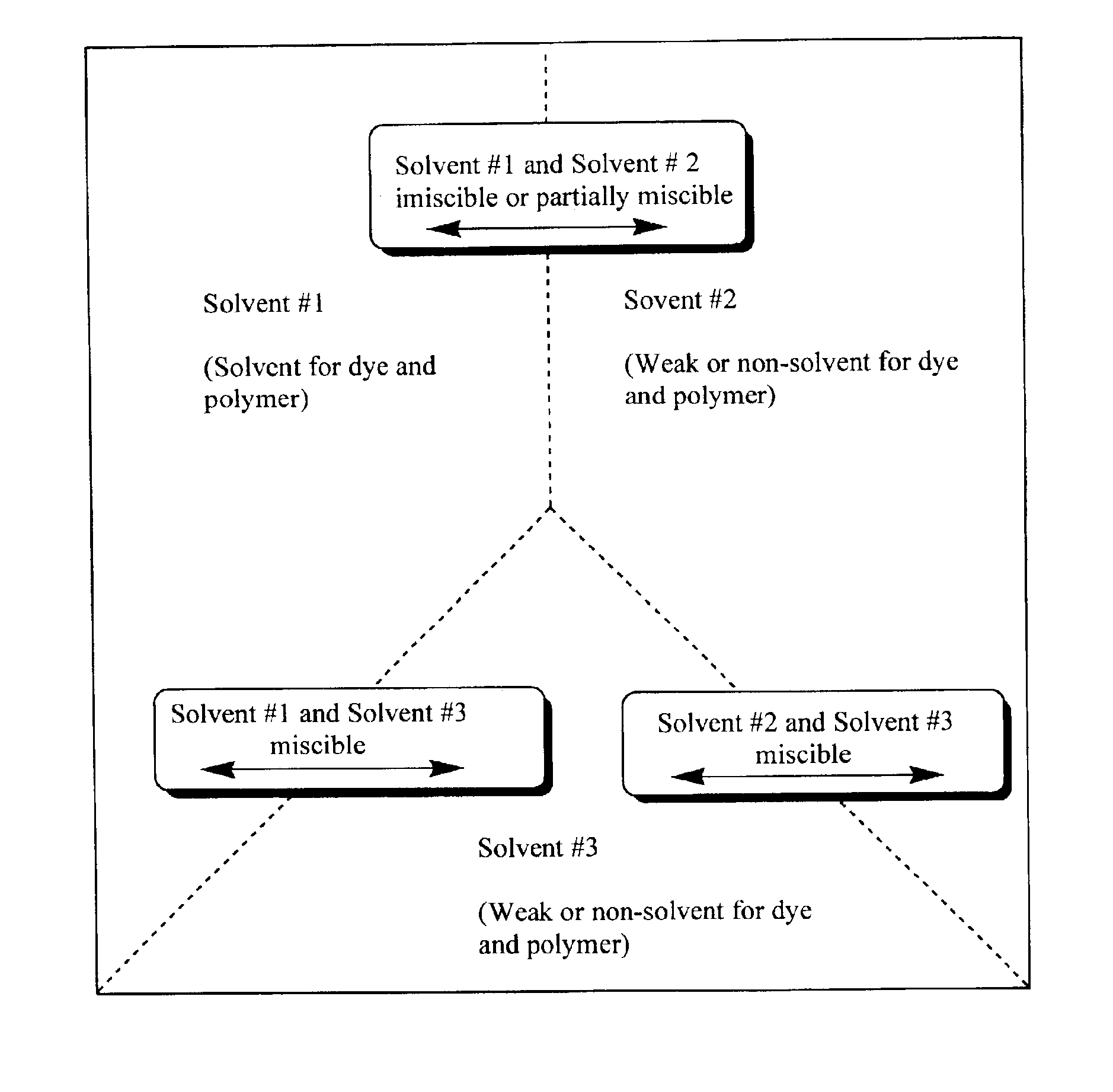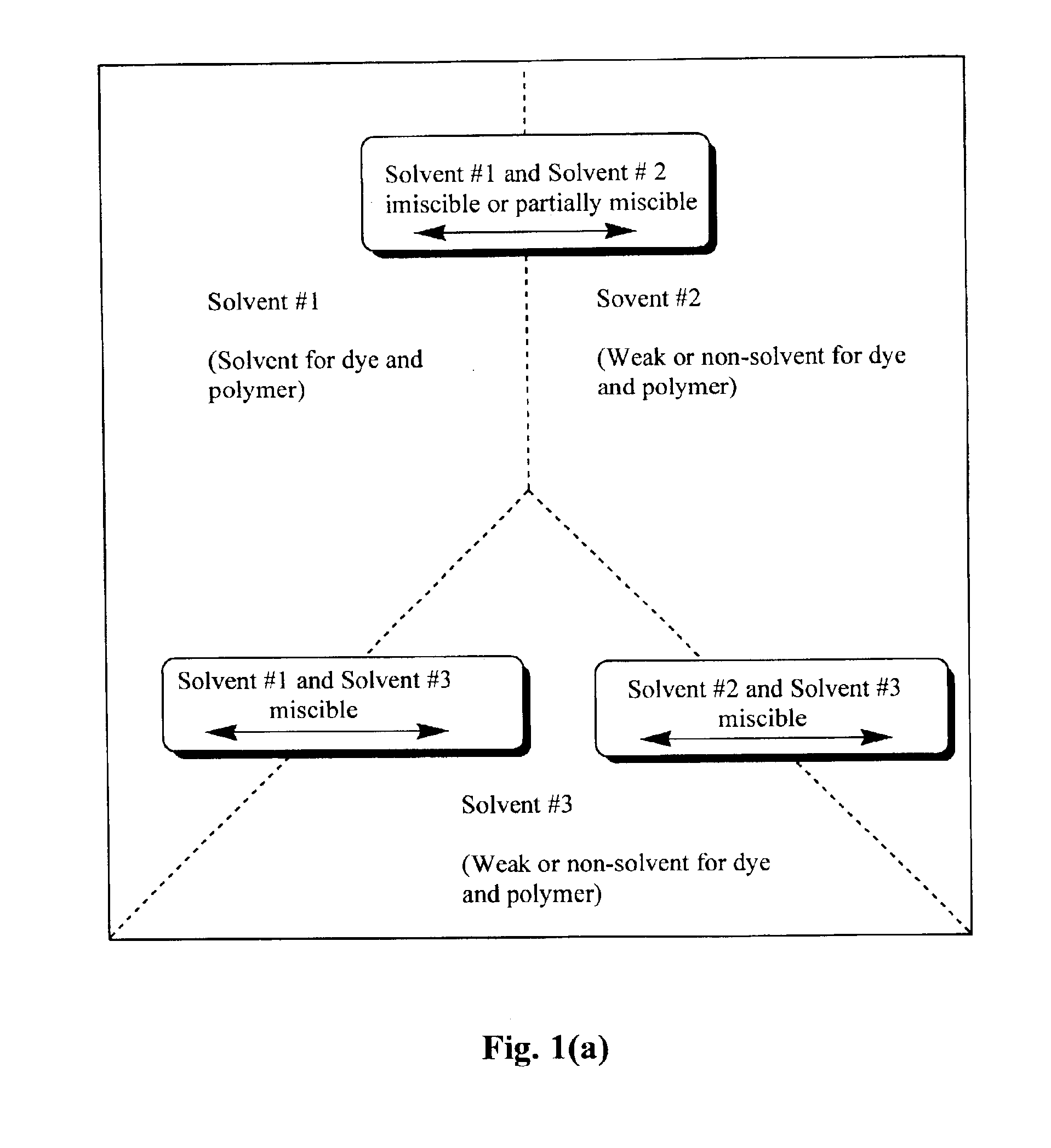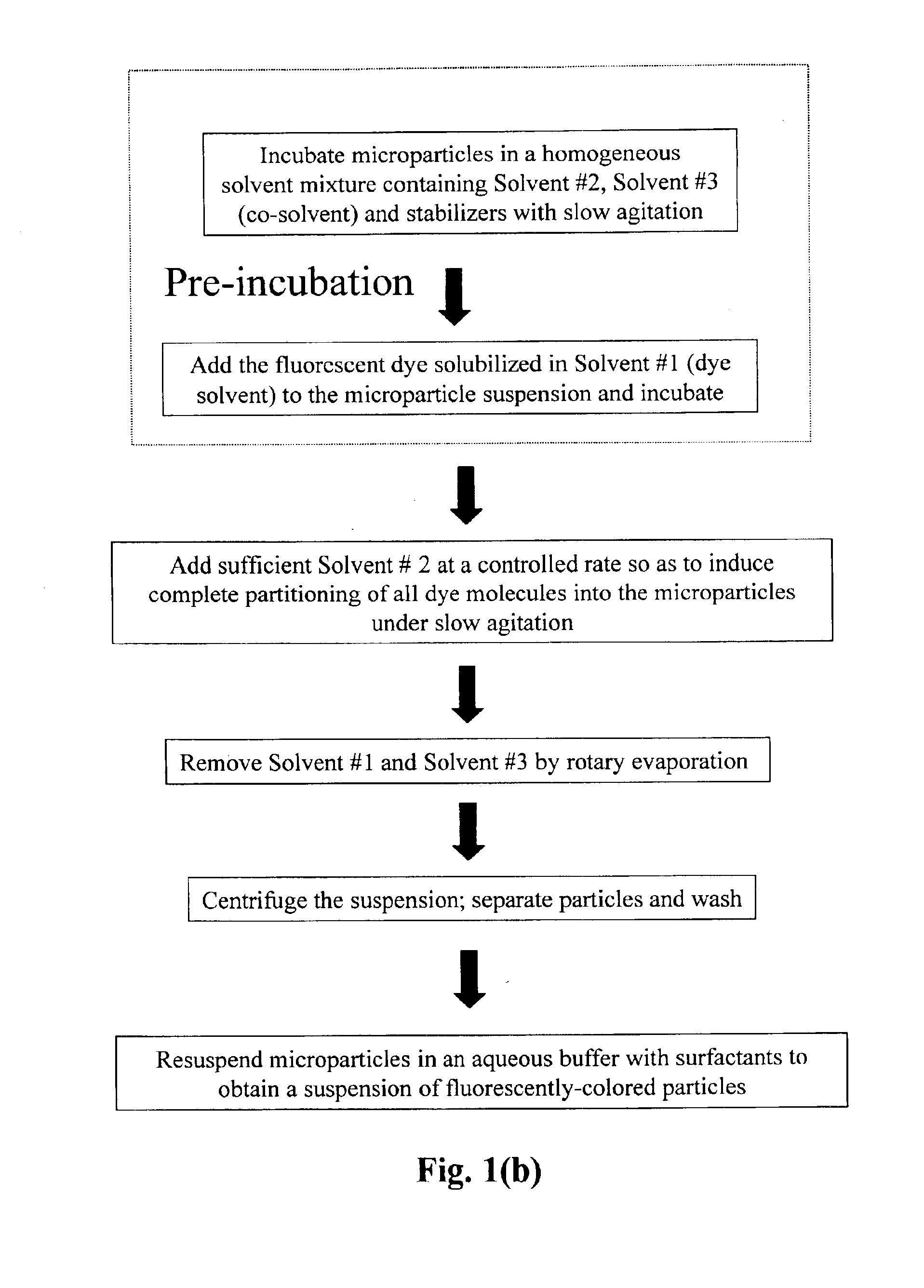Production of dyed polymer microparticles
a polymer microparticle and dyeing technology, applied in the field of dyeing microparticles, can solve the problems of inhibition of polymerization, inability to produce monodisperse fluorescent microspheres, and inability to meet the requirements of the production route of monodisperse fluorescent microspheres
- Summary
- Abstract
- Description
- Claims
- Application Information
AI Technical Summary
Benefits of technology
Problems solved by technology
Method used
Image
Examples
example 1
Synthesis of Fluorescent Green Dye-Encoded Cross-Linked Microparticles (Dye / Polymer=1.667 mg / g)
[0113]A two ml latex emulsion containing 0.2 g of cross-linked core-shell particles (Bangs Laboratories, Inc., 3.2 μm, 10% solids, 12.5% divinylbenzene) was cleaned of emulsifier by adding 1 ml ethanol and centrifuged at 6500 rpm for 2 min. This operation was repeated 3 times. The cleaned polymer particles were transferred to a 100 ml round bottom flask filled with 6 ml of a water solution of 1.0 wt % polyvinyl alcohol, 4 ml of a water solution of 0.75 wt % SDS and 19 ml ethanol. To this mixture, 1.5 ml of CH2Cl2 containing 0.3334 mg of fluorescent green dye, Bodipy FL C5, SE (4,4-difluoro-5,7-dimethyl-4-bora-3a,4a-diaza-s-indacene-3-pentanoic acid, succinimidyl ester, Mw=417.22, Molecular Probes) was added. Under 70 rpm agitation, 53 ml of distilled deionized water (an amount sufficient for complete uptake of the dye by the microparticles), was fed at a constant rate of 26.5 ml / h using a ...
example 2
Non-Cross-Linked Copolymer Particles Containing Fluorescent Green Dye (Dye / Polymer=0.30 mg / g)
[0114]The procedure of Example 1 was followed, except that the particles were synthesized as in Preparative Example 3, recipe IV (Table 2), the green dye amount in the CH2Cl2 solution was 0.6 mg and the experiment was 5 times scaled-up and run in a 500 ml round bottom flask. Two identical experiments dyeing 2.2 μm particles and 2.0 μm particles were performed. The green intensity was 13232 for the 2.2 μm particles and 7940 for the 2.0 μm particles. The colored particles were resuspended after cleaning in a 1:1 solution of 0.2% PVP K-30 and 0.02% NaDOSS for a 5% solid content.
example 3
Cross-Linked Particles Encoded With 1:1 Weight Ratio of Fluorescent Green and Orange Dyes (Green Dye / Polymer=0.07, 0.17, and 0.75 mg / g; Orange Dye / Polymer=0.153 mg / g)
[0115]The procedure of Example 1 was followed, except that the polymer particles were synthesized as in Preparative Ex. 1., and the dichloromethane dye solution contained a mixture of two dyes, the green mentioned above, and a fluorescent orange dye, Bodipy 558 / 568, SE (4,4-difluoro-5-(2-thienyl-4-bora-3a,4a-diaza-s-indacene-3-propionic acid, succinimidyl ester, Mw=443.23, supplied by Molecular Probes Inc.). The concentration of the dyes was varied for each experiment, as is shown in Table 3. The feed rate of water was maintained at 26.5 ml / h. The final particles were evaluated by reading their green and orange fluorescent intensities according to the procedure as described in Ex. 1. The results are summarized in Table 3.
[0116]
TABLE 3Green and Orange Fluorescent Intensities from Ex. 3 (26.5 ml / h water feed rate)GreenOra...
PUM
| Property | Measurement | Unit |
|---|---|---|
| Time | aaaaa | aaaaa |
| Percent by mass | aaaaa | aaaaa |
| Diameter | aaaaa | aaaaa |
Abstract
Description
Claims
Application Information
 Login to View More
Login to View More - R&D
- Intellectual Property
- Life Sciences
- Materials
- Tech Scout
- Unparalleled Data Quality
- Higher Quality Content
- 60% Fewer Hallucinations
Browse by: Latest US Patents, China's latest patents, Technical Efficacy Thesaurus, Application Domain, Technology Topic, Popular Technical Reports.
© 2025 PatSnap. All rights reserved.Legal|Privacy policy|Modern Slavery Act Transparency Statement|Sitemap|About US| Contact US: help@patsnap.com



